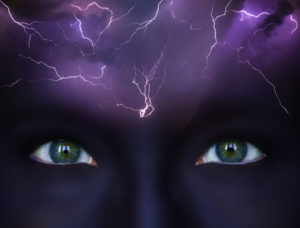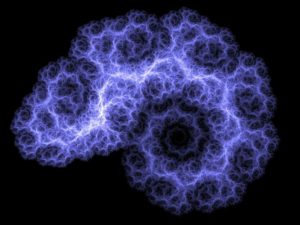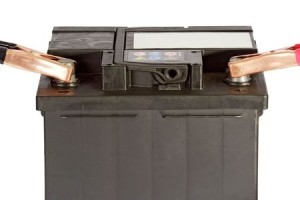Brain Stimulation or Brain Damage? Part 1

Nexstim won FDA clearance for its noninvasive brain stimulation system to treat major depression in November 2017. The Nexstim CEO, Martin Jamieson, said the clearance was a critical milestone for the commercialization of their transcranial magnetic stimulation (TMS) device in the U.S. Then in February of 2019 the FDA cleared a drastically reduced 3-minute session protocol to treat major depression with Nexstim’s NBT (Navigated Brain Therapy) System. The previous protocol time was 37 minutes. The Theta Burst Stimulation is a newer form of repetitive TMS that allows for stimulation to specific areas of the patient’s brain. “The company believes that the shorter protocol will increase ease of use for the NBT system.”
The new 3-minute NBT protocol was approved based on results from a study of 414 patients with treatment-resistant depression, which found that intermittent Theta Burst Stimulation was non-inferior to high-frequency transcranial magnetic stimulation.
There is also Humm, a transcranial alternating current stimulation (tACS) device that claims it can improve your cognitive function and memory. “Humm is a wearable patch that gently stimulates the brain’s natural rhythms to strengthen memory.” Neuroskeptic said he was pleasantly surprised with Humm’s reported study, which he said actually looked solid. Although the study was not published, he thought it would pass peer-review. He noted while there is evidence that individually-tailored theta tACS can benefit working memory, other studies show a disruption of working memory. “My point is that, a priori, there is no reason to assume a beneficial effect of this kind of stimulation.”
And most recently, the British government approved Flow, a headset claimed to reduce chronic depression symptoms. The website for Flow Neuroscience claims most users notice a reduction of their symptoms after 3-4 weeks. The device sends a small jolt of electricity through the skull into the prefrontal cortex. Users are instructed to wear the headset for a half-hour every three days over the course of six weeks. Additionally, they are encouraged to use an app, which provides useful tips such as reminders to get enough sleep, eat right and exercise.
The technology, known as transcranial direct current stimulation [tDCS], has been the subject of numerous tests, most of which have found that it provides some degree of relief from depression symptoms. Many have concluded that it is at least as effective as antidepressants, but without the side effects. Thus far, none of the trials have found any adverse effects of such treatment other than reddened skin where the electrodes are placed and the occasional headache. Such treatments have been found to change the potential of neurons—in some cases, making them fire more often, and in others less often. People with chronic depression typically experience less neural activity in the left side of their prefrontal cortex—the mild shocks are meant to increase such activity to match that in the right side. Some of the trial results have even shown that in some cases, mild electrical stimulation can encourage the growth of new neural connections, perhaps reducing depression symptoms permanently.
A study by Clarke et al. reported in the June 2019 issue of the Journal of Affective Disorders investigated the efficacy of repetitive transcranial magnetic stimulation (rTMS) in patients with treatment resistant depression and comorbid anxiety. Their study included 248 patients with treatment resistant depression. Of these, 172 also had one or more comorbid anxiety disorders. The researchers found that rTMS therapy showed improvement in depression in patients with major depression alone and those with comorbid anxiety. 39.5% of patients with comorbid anxiety disorders met the response criteria defined in the study and 23.3% met the criteria for remission.
Psychiatry Advisor reported the researchers said: “This study showed that rTMS is equally effective for treating depression, regardless of whether there are comorbid anxiety disorders or not. . . [There] is a role for future research into TMS as a treatment for patients with anxiety conditions without major depression.” TMS or rTMS devices are used typically for treatment-resistant depression and can only penetrate a few centimeters into the outer cortex of the brain. The strength of these devices declines rapidly the farther away the machine is positioned from the scalp. See “Better Living Through Brain Stimulation” for more information on rTMS and TMS.
If you want to target deeper regions of the brain, a more direct stimulation method like tDCS or tACS is needed. tDCS devices are inexpensive and easy to use. They are promoted like patent medicines, able to benefit problems such as: migraine, chronic pain, post-stroke paralysis, Parkinson’s disease, depression, tinnitus, fibromyalgia, marijuana craving and the tendency to lie; and they do not require a prescription. tACS is supposed to reverse the decline of working memory related to the aging brain. See “Jump Starting Your Brain” and “Electrical Psychiatry” for more information on tDCS and tACS.
With deep brain stimulation (DBS), we move to a procedure that requires surgery to implant electrodes into a patient’s brain. Wires connect the electrodes to a device implanted underneath the person’s skin. DBS devices are considered to be a last resort treatment method for conditions like Parkinson’s disease and Tourette Syndrome, and they carry risks of adverse side effects such as mood, behavior and personality changes. These can include suicide, depression, mania and serious impulse control issues, such as hypomania, addiction (gambling, shopping, drugs, alcohol) and hypersexuality. See “Deep Brain Jolts” for more information on DBS. See “Deep Brain Problems” for more information on the adverse effects of DBS.
An odd, unanticipated adverse effect has emerged with DBS. According to The New York Times, DBS electronic implants reduced Parkinson’s symptoms, but they also expunged some patients’ proficiency for swimming. “A lifelong swimmer leapt into deep water near his lakeside home and was horrified to find himself completely unable to swim. Had his wife not rescued him, he might have drowned.” Somehow the signals from the DBS device had deleted his ability to coordinate his arms and legs for swimming.
An article in the journal Neurology by a medical team from the University of Zurich documented nine cases among 250 patients. One of the coauthors said he thought the swimming issue was in a minority of patients, because some are still able to swim and they don’t know why. “We have no clue. They are treated in the same region of the brain. But this is life-threatening, and we need to pay more attention in the future.” In 2015 Australian doctors reported one patient who could not even float with the device turned on. With the device off, he could swim laps. Three other patients with DBS stimulators for Parkinson’s have drowned, but “they did not if the deaths were related to the device.”
Now DBS is targeting addiction treatment and China is emerging as the center for this research. AP News noted how scientists in Europe have struggled to recruit patients for their DBS addiction studies (No surprise, given the above brief description of DBS). In the U.S. there are ethical, social and scientific questions (in addition to the cost of around $100,000 to implant), as well as the adverse effects from surgery. China’s anti-drug laws can force people into years of compulsory treatment, including “rehabilitation” through labor. According to ClinicalTrails.gov, there are now 12 registered DBS clinical trials for addiction being conducted globally, 8 are in China; one each in France, Israel, Canada, and Germany. The trials are primarily for opiate/opioid use and misuse, but there are some for methamphetamine, cocaine, alcohol, and morbid obesity. Some critics believe this surgery should not be permitted.
They argue that such human experiments are premature, and will not address the complex biological, social and psychological factors that drive addiction. Scientists don’t fully understand how DBS works and there is still debate about where electrodes should be placed to treat addiction. There is also skepticism in the global scientific community about the general quality and ethical rigor — particularly around issues like informed consent — of clinical trials done in China.
Dr. Nader Pouratain, a neurosurgeon at UCLA, is investigating the use of DBS for chronic pain. He thought it was time to research DBS for drug addiction. However, only “if we can move forward in ethical, well-informed, well-designed studies.” At least two U.S. laboratories dropped clinical trials of DBS treatment for alcoholism over concerns the study design and preliminary results did not seem to justify the risks. Dr. Emad Eskandar, the chairman of neurological surgery at Albert Einstein College of Medicine said: “The lack of scientific clarity, the important but strict regulatory regime, along with the high cost and risk of surgery make clinical trials of DBS for addiction in the U.S. difficult at the present time.” The FDA blocked an application for a Chinese DBS device for a multi-site, opioid addiction.
In February of 2019, the FDA approved a small, separate trial of DBS for opioid use disorder at the West Virginia University Rockefeller Neuroscience Institute. On November 5, 2019 the Rockefeller Neuroscience Institute announced the launch of the first-in-the-U.S. clinical trial of DBS for treatment-resistant opioid use disorder. The first participant is a 33-year-old man with excessive opioid and benzodiazepine use for more than a decade. The first phase will include 3 additional participants.
ScienceAlert (the article was originally published by The Washington Post) reported Dr. Rezai said he wasn’t advocating DBS as a first line or even a second line treatment. “It’s for people who have failed everything, because it is brain surgery.” He acknowledged that doctors and researchers do not fully understand how this (DBS) works. “The exact mechanisms are not known.” By modulating the reward circuit, which relies on dopamine, “you’re getting better control, so you’re not craving dopamine as much.”
The trial is partly funded by the National Institute on Drug Abuse (NIDA). The director of NIDA, Nora Volkow, said she has spoken with a few of the patients who underwent the procedure in China and thought the surgery had promise. She thought the surgery had disrupted the brain’s fixation on opioids. “They reported more of an ability to engage, to feel interest in other things.” She suggested that brain’s fixation on opioids may be disrupted by the surgery. Helen Mayberg, the director of the Center of Advanced Circuit Therapeutics at the Mt. Sinai Medical Center School of Medicine, said the logic of the effort was sound and the circuitry of the targeted area of the brain was well-mapped compared to other regions. “The key question is whether the researchers have found the precise spot for insertion of the electrodes.”
Brain stimulation (magnetic or electric) has been progressively moving from the laboratory to the clinic and even into the privacy of your home. It seems to me that as brain stimulation devices enter the market place, they are being promoted like patent medicines were a hundred or more years ago. Most of the devices are noninvasive, except for DBS devices, which require brain surgery. DBS has been approved and used to treat medical issues such as chronic pain, Parkinson’s and Tourette Syndrome. And now doctors and researchers are trying it with another desperate and vulnerable population—addicts.
There is a growing global opioid crisis and DBS is being researched and promoted as an addiction treatment for individuals who have failed other approaches. But is DBS treatment worth the risk with addiction? DBS supporters like those mentioned here would say yes. The 2019 World Drug Report estimated there were 35 million worldwide who suffer from drug use disorders. More specifically, there were more than 47,000 opioid overdose deaths in the U.S. in 2017, an increase of 13% from the previous year. The number of new psychoactive substances (NPS) that are synthetic opioids rose from 1 substance in 2009 to 15 in 2015 and 46 in 2017, accounting for 29% of the newly identified NPS in 2017.
Currently there are an estimated 180,000 people globally who have DBS devices implanted in their brains. But that would increase exponentially if DBS becomes a more widespread treatment for addiction. Yet Ali Rezai, the executive chairman of the West Virginia Rockefeller Neuroscience Center (where the FDA clinical trial is being conducted) acknowledged they do not fully understand how DBS works. There are serious ethical, social and scientific questions about DBS as well as a variety of adverse effects that result from the surgery. We will examine some of these in part 2.
Originally posted on January 28, 2020.


